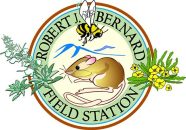Startin, Charlotte (2016)
The effects of light pollution on the foraging behavior of Calypte anna and Selasphorus sasin.
Advisor: Elise Ferree.
With urban environments increasing at a faster rate than any other land cover, it is important to assess anthropogenic impacts on wildlife. As light is a vital environmental cue for many organisms, light pollution is an important variable that could influence behavior. Birds use photoreceptors to perceive daylength in order to time survival behaviors, like foraging, to maximize fitness. This study aims to determine the effects of artificial light on the timing of foraging behaviors for two species of hummingbird, Calypte anna and Selasphorus sasin, natives to the natural scrub habitat of Southern California. By comparing light sites in the suburban environment of Claremont to a dark natural environment, we predicted to observe different feeding patterns and timing. However, birds exposed to artificial light did not feed at different times as birds in a natural environment. Birds did respond to natural light, with the first feed of the day occurring earlier relative to sunrise on shorter days across seasons. Feeding frequency throughout the day followed a consistent pattern across sites, with feeding peaking around sunrise and sunset.
